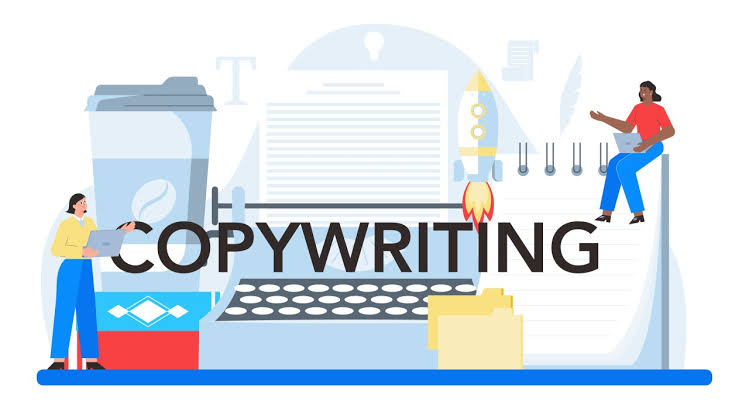Learn how to measure the success of your copywriting with key metrics and analytics. Discover the importance of conversion rates, click-through rates, engagement rates, and ROI. Explore tools and techniques for analyzing audience behavior, conducting A/B testing, and applying insights to optimize your copywriting strategy effectively.
Evaluating the Impact of Copywriting Success Metrics and Analytics Copywriting plays a role, in marketing as it involves creating compelling and captivating content to prompt desired actions from an audience. To gauge the effectiveness of your copywriting endeavors it's crucial to utilize metrics and analytics. These tools assist in measuring the impact of your copy comprehending audience behavior and fine tuning strategies for improved outcomes. This article delves into the different metrics and analytics that can be employed to assess the success of copywriting. Grasping Performance Metrics KPIs Key Performance Indicators (KPIs) are metrics used to assess the success of copywriting initiatives. These indicators are customized based on your objectives offering insights into how effectively your copy is performing. Common KPIs encompass rates, click through rates (CTR), engagement levels and return on investment (ROI). By concentrating on these metrics you can evaluate how well your copy achieves its intended goals.
Conversion Rates
The effectiveness of writing is gauged, by looking at the conversion rate. This metric shows the percentage of users who complete an action like buying something, subscribing to a newsletter or filling out a contact form. To find out the rate you divide the number of conversions by the total visitors and then multiply by 100. For example if your writing resulted in 100 conversions from 1,000 visitors your conversion rate would be 10%. A high conversion rate suggests that your writing is successfully convincing users to take the action you want them to.
Click-Through Rates (CTR)
The click-through rate (CTR) gauges the frequency at which users interact with a link or call-to-action (CTA) found in your writing. To calculate it you divide the number of clicks by the number of impressions and then multiply by 100. For instance if your writing garnered 500 clicks out of 5000 impressions your CTR would stand at 10%. An elevated CTR indicates that your writing is captivating and prompts users to delve deeper into your content.
Engagement Rates
Engagement rates measure how users engage with your content. This encompasses metrics like likes, shares, comments and time spent on a page. When engagement rates are high it suggests that your message strikes a chord with the audience and fosters interactions. By examining metrics you can pinpoint the elements of your writing that are most captivating and use that insight to shape your content approach.
Return on Investment (ROI)
Return on investment (ROI) is a way to assess the impact of your writing on your business. It looks at how much money your writing brings in compared to what it costs to create and share it. To figure out ROI you take the revenue from your writing subtract the expenses and divide that number by the expenses. Then multiply by 100. For instance if your writing brought in $10,000 and it cost $2,000 to make your ROI would be 400%. A positive ROI shows that your writing efforts are paying off financially.
Analyzing Audience Behavior
Besides KPIs examining how your audience behaves offers insights into the performance of your content. Platforms like Google Analytics and social media analytics provide information about user interactions preferences. Key points to consider are.
Traffic Sources. Knowing where your traffic originates from—whether its through search, social media or paid advertisements—helps assess how well your content works across channels. This knowledge enables you to tailor your content for specific sources and audience segments.
Bounce Rate. Bounce rate tracks the of visitors who leave your website after viewing a single page. A high bounce rate might suggest that your content isn't captivating or relevant enough to prompt users to explore further. Reducing rates often involves enhancing the relevance and attractiveness of your content.
Heatmaps are tools that display user interactions like clicks, scrolling and time spent on a webpage. By studying heatmaps you can pinpoint sections of your content that capture attention and areas that might require enhancements. This graphical information can inform changes aimed at boosting user engagement and improving conversion rates.
A/B Testing
A/B testing, often referred to as testing, is a method used to compare two versions of your content to see which one performs better. By making variations of your text with headlines, calls to action or different content you can evaluate which version achieves engagement or conversion rates. This process offers valuable insights into what aspects appeal to your audience allowing you to fine tune your copywriting approach.
Interpreting and Applying Results
After gathering information on metrics and analytics it's important to analyze the findings and use them to enhance your writing. Look for patterns and trends in the data that reveal the strengths and weaknesses of your copy. For instance if a specific call to action consistently produces conversion rates consider using similar wording or design elements in other areas of your writing. Utilize the insights from analytics to fine tune your writing approach try out methods and consistently improve your content. By keeping an eye on metrics and adjusting your strategies you can ensure your writing stays impactful and aligned with your objectives.
Conclusion
Assessing the impact of copywriting requires utilizing metrics and analytics to gauge how well your content is resonating. By paying attention to indicators like conversion rates, click through rates, engagement levels and return on investment you can gain insights, into the effectiveness of your writing. Examining audience behavior and performing A/B tests can further deepen your comprehension of what strategies are effective and what areas need enhancement. Incorporating these findings into your copywriting approach will enable you to craft content that encourages desired actions and fulfills your marketing goals.
